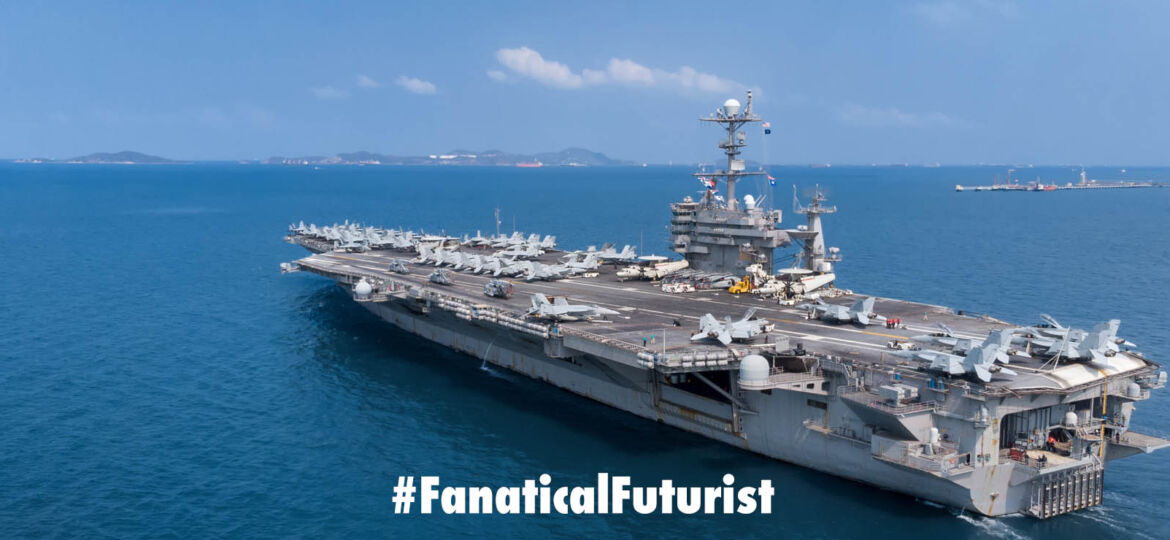
WHY THIS MATTERS IN BRIEF
Fusion promises to give the world limitless amounts of clean green energy, but first we have to get a working prototype reactor …
 Love the Exponential Future? Join our XPotential Community, future proof yourself with courses from XPotential University, read about exponential tech and trends, connect, watch a keynote, or browse my blog.
Love the Exponential Future? Join our XPotential Community, future proof yourself with courses from XPotential University, read about exponential tech and trends, connect, watch a keynote, or browse my blog.
The world’s most powerful magnet, which is so powerful that it could lift an aircraft carrier 6 feet off the ground, is being shipped to France for installation in the core of ITER, the experimental fusion reactor where it’s hoped it will help ITER prove the feasibility of creating fusion energy on an industrial scale by replicating the energy generating process seen in the centre of our sun.
The magnet, known as the central solenoid, is being shipped in parts and when it’s fully assembled will be 18 metres tall, 4.2 metres wide and weigh around 1,000 tonnes once fully constructed. With a magnetic field strength of 13 tesla, it will be about 280,000 times stronger than Earth’s own magnetic field. Because of this, the structure that the central solenoid sits in will have to withstand forces equal to twice the thrust of a space shuttle lift-off.
Learn more abut the Future of Energy, by Futurist Keynote Matthew Griffin
The magnet will be constructed from six modules, each containing 43 kilometres of coiled niobium-tin superconductors. Once these coils are in place, they will be sealed with 3,800 litres of epoxy and shipped to the ITER construction site in France from the General Atomics factory in California. The first module leaves this month and the next will follow in August.
ITER will be the largest fusion reactor yet once it is complete, with 2025 the current end goal. Engineers working on the project aim to make it the first reactor that will provide more energy from fuel than is required to sustain the fusion reaction – the plan is to create 500 megawatts of usable energy from an input of 50 megawatts.

The world’s most powerful magnet
Fusion reactors replicate the reactions seen inside stars, where vast gravitational pressure allows pairs of hydrogen atoms to merge and create helium atoms, releasing energy in the process. In a fusion reactor, the gravitational pressure would be far lower than inside a star, so achieving the same reaction will require far higher temperatures.
Unfortunately, the necessary temperatures of above 150 million °C would melt all known materials on Earth, so ITER will use powerful magnets to contain the reaction in a ring away from metal surfaces. Water pumped through the walls of the reactor will turn to steam and drive turbines to generate electricity. It’s planned that the central solenoid will generate a flow of reacting plasma around the ring, while other magnets will contain the plasma within the ring and adjust its shape.
Unlike existing nuclear power plants, which use fission, fusion reactors don’t generate radioactive waste with a long half-life, and their deuterium fuel is abundant. They are also safer because any disturbance in the reaction will cause it to stop rather than run away uncontrolled. But it has proved far more difficult to harness fusion as an effective power source.
A previous international effort led to the construction of the JET fusion reactor in the UK in the 1980s, which also aimed to reach the break-even point, where more energy was produced than was put in. Although at one point it came closer than any other device to that target, it hasn’t yet reached it.
The UK is also developing plans for a Spherical Tokamak for Energy Production (STEP), a nuclear fusion power station whose construction could begin in 2030 if costs of around £2 billion are funded.
















